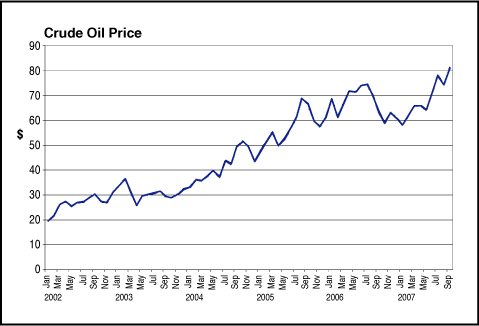The Growing Wave Of Ethanol
Liquidity Of The Biofuels Market
The ethanol futures contract is relatively young, but the market has tremendous growth potential. Here's why.
Since the early 1970s, the ethanol and biofuels industry has witnessed rapid and unprecedented growth. In the last couple of years in particular, the attention surrounding ethanol and biofuels has exploded on a national and global level. From celebrities and politicians, to activists and environmentalists, to the local farmers and table-talk pundits, everyone is weighing in on the topic. The biofuels industry has evolved from a sleepy, farmtown dream into a booming 21st-century phenomenon.
Generally speaking, a young but profitable industry with massive growth potential usually brings out the eager investor in all of us. However, since the first ethanol futures contract debuted in 2004, it has generated relatively little interest and remains today an illiquid market. As the industry continues to evolve, many investors wonder if and when this fledgling market will begin to flourish.
AN APPEALING MARKET
The recent popularity and demand for biofuels has been propelled by two key factors: a governmental push to reduce the country's dependency on foreign oil, and an increase in the development and implementation of environmental policies.
In 2005, the US government mandated ethanol as a gasoline additive to
increase octane and reduce smog-causing emissions. The Energy Act of 2005
promised an increase in ethanol consumption to 7.5 billion gallons by 2012.
With the rapid growth seen in the industry, however, the US is poised to
reach this production mark by the end of 2007. In addition, proposals from
the Bush administration are designed to raise the production of alternative
fuels to 35 billion gallons and reduce petroleum usage by 20% by 2017.
FIGURE 1: CRUDE OIL PRICES. Higher crude oil prices in 2004-05 led to an increase in ethanol blends.
There continues to be pressure from political, environmental, and economical backers on both sides of the biofuels debate. Although ethanol and biofuels have taken some heat from critics who blame the ethanol and biofuels industry for rising food costs, more publicity has been focused on the future mandates of biofuels in the United States. Currently, the House of Representatives and the Senate are struggling to reconcile bills in order to develop a long-term plan for alternative energy production, usage, and funding.
At this time, the primary use of ethanol is as an additive in the blending
of unleaded gasoline. The most common blend is 10% ethanol, but as environmental
standards tighten, ethanol-blending percentages may reach 20% in some areas
of the country in the near future.
...Continued in the December issue of Technical Analysis of STOCKS
& COMMODITIES
Excerpted from an article originally published in the December 2007
issue of Technical Analysis of
STOCKS & COMMODITIES magazine. All rights reserved. © Copyright
2007, Technical Analysis, Inc.
Return to December 2007 Contents
